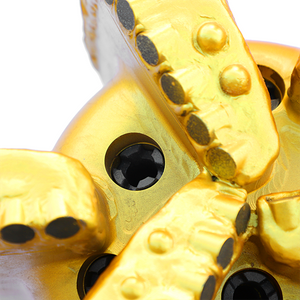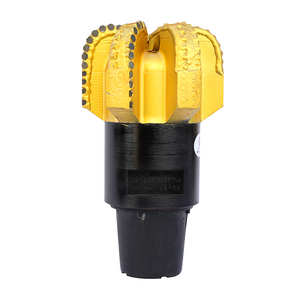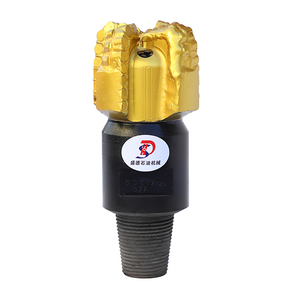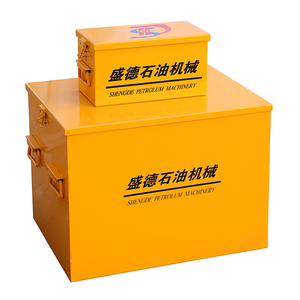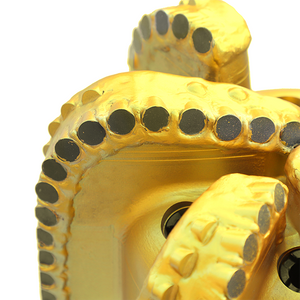Polycrystalline Diamond Compact (PDC bit) technology has revolutionized the drilling industry, particularly in oil and gas exploration. The PDC drill bit is widely used due to its exceptional cutting efficiency, durability, and cost-effectiveness. Unlike traditional roller cone bits, PDC bits employ a shearing action to cut through rock formations, making them highly efficient in soft to medium-hard formations.
Understanding the cutting mechanism of PDC drill bits is crucial for optimizing drilling performance, reducing operational costs, and improving wellbore quality. This article provides an in-depth analysis of the structural features, materials, cutting mechanisms, and key factors influencing the efficiency of PDC bits.
Structure and Materials of PDC Bits
The design and material composition of a PDC bit play a critical role in its cutting performance. Each component is engineered to enhance durability, optimize cutting efficiency, and withstand extreme drilling conditions.
Key Components
A PDC drill bit comprises several essential components:
Bit Body – The main structure of the PDC bit, typically made from high-strength steel or matrix body material, which provides durability and resistance to wear.
Cutting Elements (PDC Cutters) – Polycrystalline diamond compact cutters, which provide the shearing action needed to break rock formations.
Nozzles and Hydraulic System – Designed to enhance cooling and remove cuttings efficiently.
Gauge Protection – Reinforcement features on the bit’s outer surface to prevent excessive wear and maintain hole diameter.
Design Features of Cutting Elements
The cutting elements of a PDC bit consist of PDC cutters, which are composed of synthetic diamond particles sintered together under high pressure and temperature. These cutters have several design features that impact their cutting efficiency:
Cutter Shape – Cylindrical or chamfered edges to optimize shearing action.
Diamond Layer Thickness – Thicker diamond layers increase durability but may reduce cutting aggressiveness.
Cutter Orientation – Angles and positioning influence how the bit interacts with the rock.
Role of Nozzles and Hydraulic Design
The hydraulic system in a PDC drill bit plays a crucial role in maintaining cutting efficiency. Proper nozzle placement and fluid flow help:
Cool the Cutters – Preventing excessive heat that can lead to cutter degradation.
Remove Cuttings Efficiently – Ensuring that drilled cuttings do not clog the bit.
Reduce Friction – Minimizing resistance between the bit and the formation.
Cutting Mechanisms of PDC Bits
The cutting mechanism of a PDC bit primarily relies on a shearing action rather than crushing or grinding, which makes it significantly more effective in many drilling applications. The process can be broken down into the following steps:
Engagement with the Formation
Shearing and Fracturing
Unlike roller cone bits that crush the rock, a PDC bit shears through formations, creating larger, more uniform cuttings.
Cutting Removal
A key advantage of this shearing mechanism is higher penetration rates and reduced energy consumption, making PDC drill bits more efficient than traditional bits in many drilling environments.
Key Factors Influencing Cutting Efficiency
Several factors affect the cutting efficiency of a PDC bit, including cutter material, bit design, drilling parameters, and formation characteristics.
1. Cutter Material and Wear Resistance
The performance of a PDC drill bit heavily depends on the quality of its PDC cutters. Advanced synthetic diamond materials ensure superior hardness and resistance to wear. Recent advancements include:
2. Bit Design and Cutter Layout
The configuration of PDC cutters on the bit face directly influences cutting performance. Key design elements include:
| Feature |
Impact on Performance |
| Cutter Density |
Higher density improves efficiency in hard formations but may reduce penetration rate. |
| Back Rake Angle |
A lower angle improves aggressiveness, while a higher angle enhances durability. |
| Cutter Size |
Larger cutters provide better durability, while smaller ones allow finer cutting. |
3. Drilling Parameters
Optimizing drilling parameters ensures maximum efficiency of a PDC bit. Important parameters include:
Weight on Bit (WOB) – Higher WOB increases penetration but may accelerate cutter wear.
Rotary Speed (RPM) – Faster rotation improves shearing action but can increase heat generation.
Mud Flow Rate – Proper flow rate ensures effective cooling and cuttings removal.
4. Formation Characteristics
The nature of the rock formation significantly impacts the performance of PDC drill bits. Different formations require specific bit designs:
| Formation Type |
Recommended PDC Bit Design |
| Soft Formations |
High cutter density, aggressive rake angles. |
| Medium-Hard Formations |
Balanced cutter layout, optimized hydraulic design. |
| Hard and Abrasive Formations |
Reinforced cutters, robust gauge protection. |
Conclusion
The PDC bit has revolutionized drilling operations with its efficient shearing mechanism, durable materials, and advanced design features. By leveraging high-performance PDC cutters and optimizing drilling parameters, operators can achieve faster penetration rates, lower operational costs, and extended bit life.
Understanding the cutting mechanism of PDC drill bits helps drilling engineers make informed decisions when selecting the appropriate bit for various geological conditions. As technology continues to evolve, innovations in PDC bit design and materials will further enhance drilling efficiency and reliability.
FAQs
1. What is the main advantage of using a PDC drill bit?
PDC bits offer higher penetration rates, reduced energy consumption, and longer lifespan compared to roller cone bits, making them ideal for many drilling applications.
2. How does a PDC bit cut through rock?
A PDC bit utilizes a shearing action, where its PDC cutters slice through rock formations rather than crushing them, resulting in higher efficiency.
3. What factors affect the performance of a PDC drill bit?
Key factors include cutter material, bit design, drilling parameters (WOB, RPM, and mud flow), and formation characteristics.
4. Can PDC drill bits be used in all types of formations?
While PDC bits excel in soft to medium-hard formations, specialized designs with reinforced cutters can handle harder formations effectively.
5. How do nozzles in a PDC bit improve performance?
Nozzles enhance cooling, remove cuttings, and reduce friction, ensuring the PDC bit maintains optimal performance throughout the drilling process.












